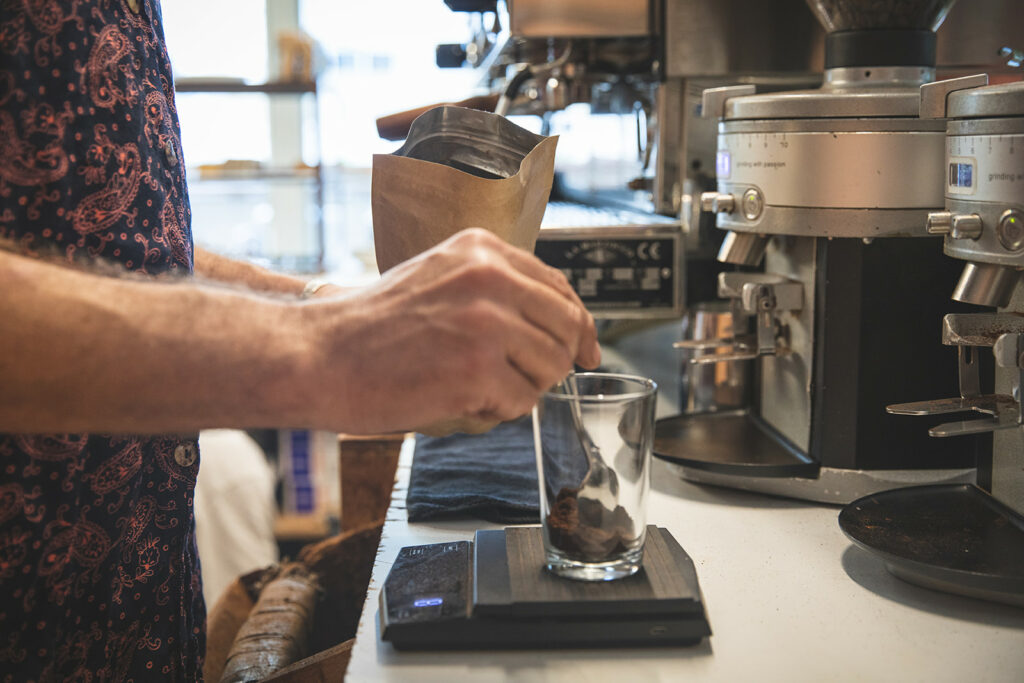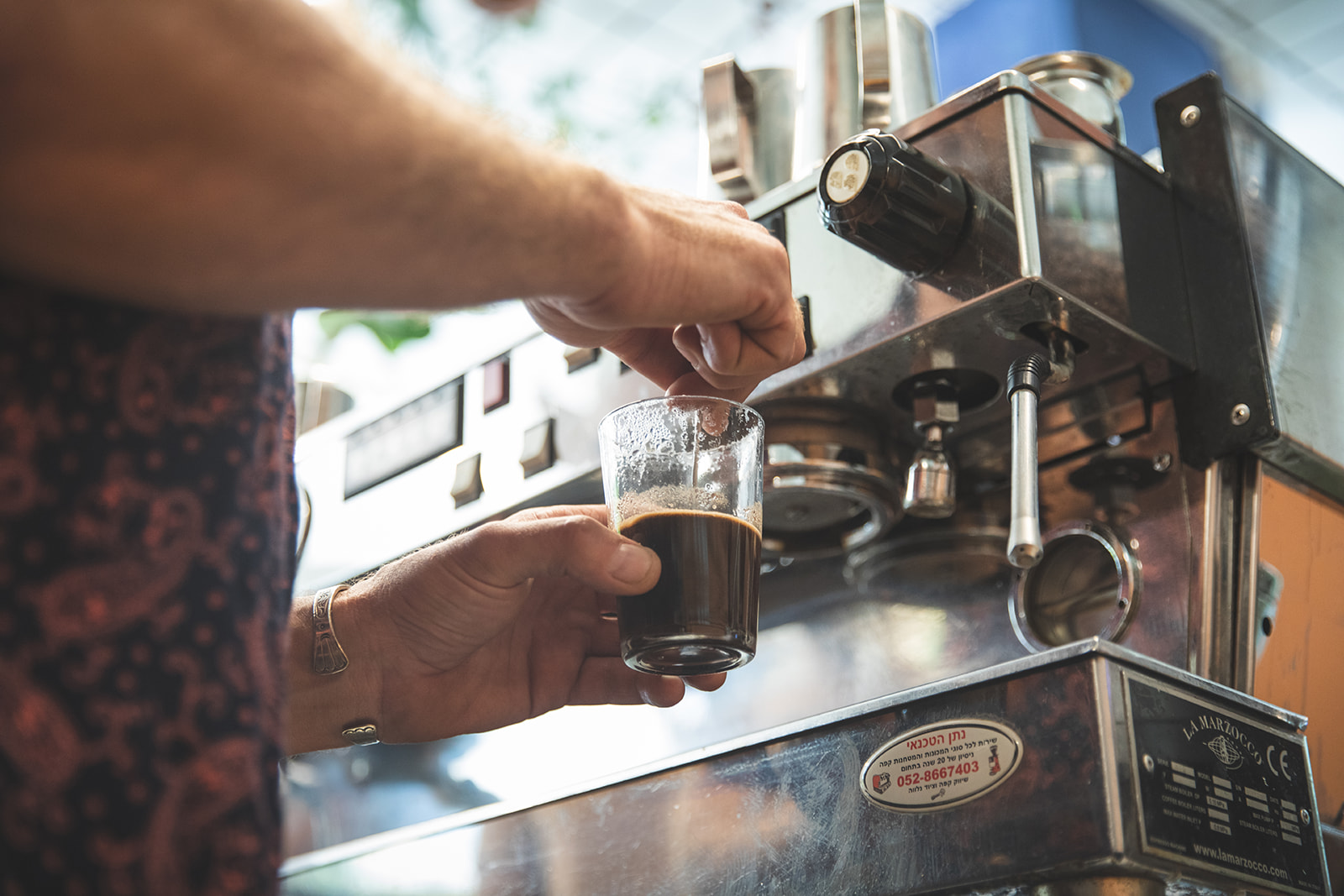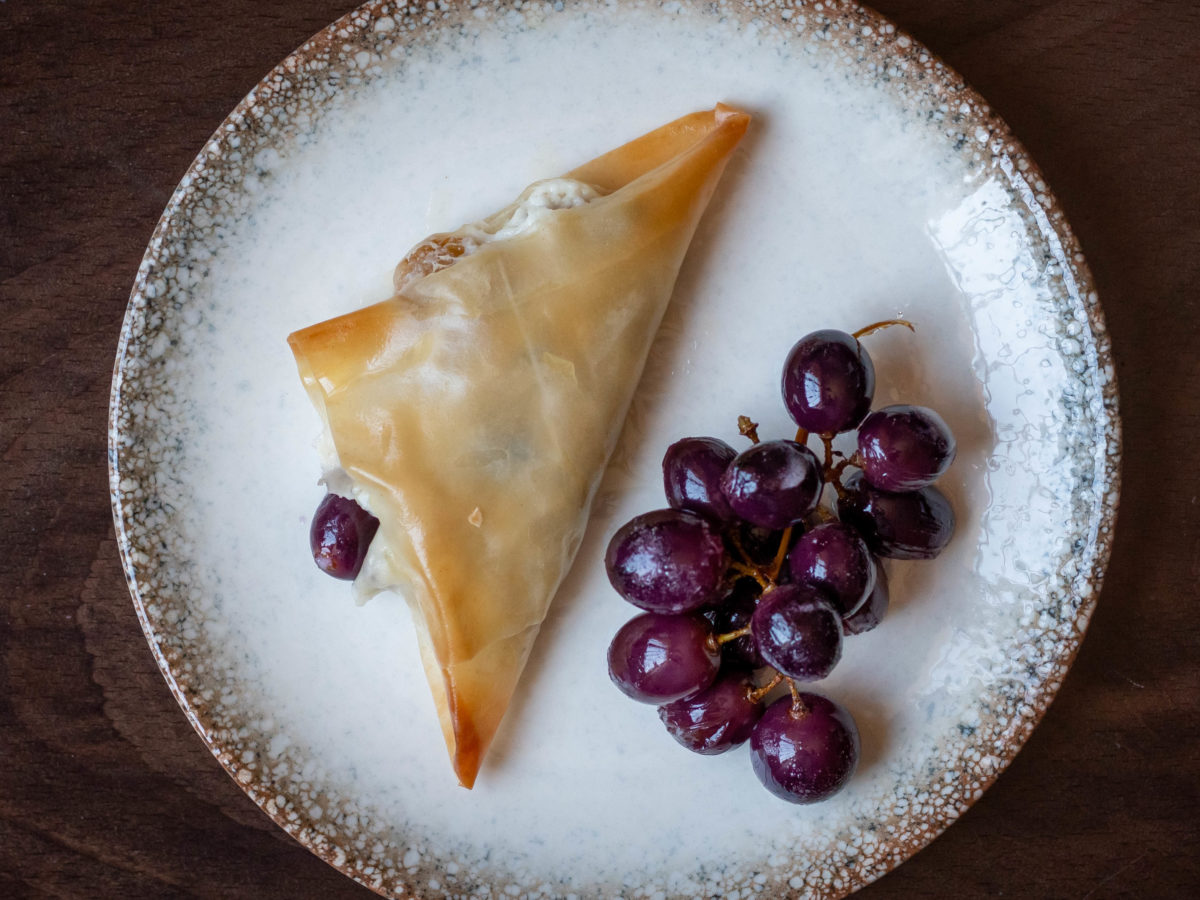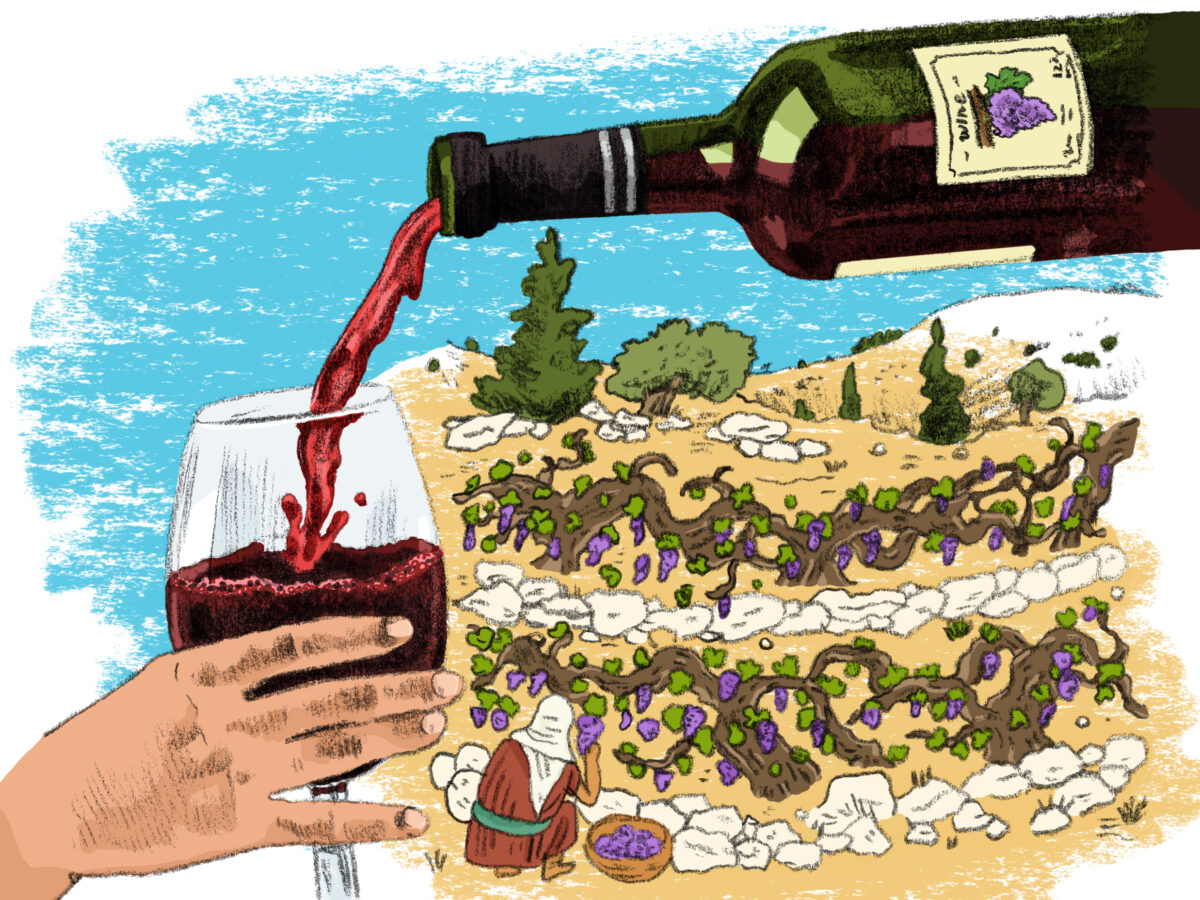In 2020 I returned to Israel from France, where I’m a PhD candidate in sociology, focusing on the “quality revolution” in the coffee markets of Brazil, France, and also Israel. Upon my return, I discovered that Israel was experiencing a golden age of coffee, with unprecedented interest in coffee and coffee culture. As I helped work on the “Coffee: East and West” exhibition at Jerusalem’s Museum for Islamic Art and edited the exhibition’s book, I got an in-depth introduction to the rich history of Turkish coffee (called cafe shachor or black coffee in Hebrew) in the area. In one of the coffee shops I visited, the hip third-wave HOC, I met Lior Assal and encountered an evolving scene of specialty Turkish coffee, with a light roasting and fruiter, sourer flavors than those traditionally associated with this drink.
Two years later, Assal applied to be a contestant on the reality cooking show “MasterChef.” In his audition, he served a cake accompanied with Turkish coffee with an update: he used lightly roasted Caturra beans from Columbia (where he spent several months during the pandemic). His choice raised a heated discussion among the show’s judges — is it appropriate to serve Turkish coffee in an audition for a culinary show? And if so, how should it be prepared? As instant coffee as Assal suggested or traditionally, brewed slowly in a cezve?
The judges’ reaction made me think about the status of Turkish coffee in today’s Israeli society and Arab society. Is there a single right method of preparing it? Why are some methods considered “authentic,” while others are not? And does coffee in general, and Turkish coffee in particular, have a place in the local gastronomic culture?
An Ancient Social Drink
In the first 1,000 years of its documented consumption, coffee was prepared as an infusion, made of the fruit of the Coffea plant, also known as the coffee cherry; the coffee beans are, in fact, its seeds. The black, roasted beverage we know today originated in 15th century Yemen. It became prevalent locally during the Ottoman period ( hence its name, Turkish coffee), when tools were created for brewing it. The most familiar of these is the a small pot known in our area as adhwa or jidhwa (جذوة), jelaye (غلاية) or rakhna (ركوة), cezve in Turkish, briki (μπρίκι) in Greek. In the U.S. and Europe, it’s called ibrik or cezve. With it also appeared the low round cups called fincan.
Despite initial opposition from Muslim religious authorities, coffee gradually become the social drink of the area, used in everyday and ritual contexts instead of wine, the consumption of which is prohibited in Islam. The first local coffee shops opened in the 16th century in the port towns that have developed into present-day Haifa and Jaffa, becoming stops for passengers and sailors descending from ships, and places of leisure where coffee was sipped to the sound of music and the smoke of hookahs.

Alongside this rich material culture, diverse regional serving traditions also began to develop. Among the bedouins of the western Negev, the pounding of coffee became an inseparable part of its ritualistic preparation, as Nissim Krispil describes in the book “Coffee: East and West.” Its rhythmic crushing with a wooden pestle, called adnat al-jurun, invites whoever hears it to come and drink. In times of grief, the coffee cup is turned upside down to express the pain over the loss of a loved person. In negotiations, a refusal to drink coffee is a signal for the host to inquire into the matter or reconcile the refuser. While the bedouins of the Negev usually drink a bitter, unsweetened coffee, the tribes of Jordan drink it both bitter – kahwe sade – and sweetened – kahwe hilwe – in three degree of sweetness – ariha, mazbuta, and ziada (the sweetest).
While in Arab culture, the tradition of preparing coffee remained unchanged for centuries, waves of Jewish immigration turned Turkish coffee into an almost obvious, basic commodity, with Elite’s “Turkish Coffee,” also called “mud coffee,” becoming Israel’s most popular coffee brand.
An Israeli Symbol
The immigration waves of European Jewish communities introduced a new style of coffee shops, where tea and alcoholic drinks were consumed more than coffee. At the end of the 19th century, the Templars brought with them “western” coffee, prepared with a kettle and not in a cezve; it was served in coffee shops in the German colonies of Jerusalem, Tel Aviv, and Haifa. After 1948, European-style coffee shops replaced many of the Arabic ones.
While Jewish coffee shops tended to disregard Turkish coffee at the time, it slowly became a symbol of the new Israeliness, and with the invention of the “Pakal Cafe” (a kit for making coffee on the go, with roots in the army), also a symbol of locally-rooted military masculinity. In 1961, following large waves of migration of Jews from Arab countries, the Balkans, and the Middle East, the Israeli Elite company began marketing Turkish coffee, which gradually became a basic commodity. The “Turkish” label distanced the beverage from regional connotations in the Israeli mind, and the quick preparation method — simply mixed with boiling water instead of lengthy cooking — made it modern and accessible for the new Israelis. Today, it is the most popular coffee drink in Israel, and accounts for 50% of consumed coffee beverages.
Similarly to the local history of hummus — which is available both in supermarkets and small generations-old shops — two kinds of Turkish coffee developed, both perceived as “authentic” by the Jewish Israeli public. Elite’s Israeli Turkish coffee, with a taste of home, is associated with military service, the kibbutz, and field trips. It was initially marketed in nostalgic tins, echoing the era of austerity or tzena just after the states’ founding, in which simple, accessible, local yet industrialized Israeli food developed. The milk and poultry industries were marketed similarly. On the other hand, the slowly-brewed Arabic Turkish coffee, according to the view expressed by “MasterChef” judge Eyal Shani, is perceived as more complex and therefore more gastronomic, similarly to the hummus served in the hummus spots in East Jerusalem.
Nakhly was founded in the early 1970’s by Sobhi Nakhly, who started roasting coffee at home, selling it to his friends and neighbors in Shefa-Amr, after learning the secrets of coffee roasting from Iraqi immigrants in Haifa, where he worked as a taxi driver. His little roasting shop soon became a factory, manufacturing the first coffee brand with cardamon to be sold in grocery stores and supermarkets.
Sobhi’s nephews founded the El Nakhleh brand (known in Israel as “green Nakhleh”) and kept using the same green and white packages (the original bag of the Nakhly brand owned by their uncle Sobhi), while Sobhi’s son chose a red aluminum packaging for his Nakhleh brand. While the green El Nakhleh became a popular commercial brand that’s marketed as “traditional,” the red Nakhly company began importing specialty coffee beans and invested in automation, quality control and capsules. Today it is the second largest coffee brand in Israel: the Shefa-Amr factory manufactures about 350 tons of packed coffee a month, sold by 5000 retailers.
In 2001, Nakhly’s success led the Strauss-Elite coffee company to launch a competing brand for the Arabic market — Asaleh Coffee. The extensive marketing campaign included the distribution of free coffee in Arab villages and cities. In response, the red Nakhly brand launched a campaign featuring riders on horseback engaged in a “battle” over authentic Arabic coffee. The Asaleh brand disappeared before the end of that year.
Coffee Starter and Coffee Spices
The third-wave coffee world and reality shows are perhaps only beginning to discover the richness of Turkish coffee, but as the Arab world has long known, it’s a complex beverage. This is also true of Turkish coffee blends: Mustafa, founder of Cafe Haifa, a coffee roasting shop in Haifa’s Wadi Nisnas operating since 1982, spent nine months of trial and error to find the right formula for his. A Turkish coffee blend usually includes Robusta, or Coffea Canephora, which contributes a full body and typical bitterness, and Coffea Arabica, an aromatic coffee variety with high acidity.

Acidity is essential to traditional Turkish coffee. Some families even keep a “coffee starter” — leftover coffee kept in a pot to ferment or in the freezer for up to 20 years. The person preparing the coffee adds a small amount of this starter to achieve deeper flavors and a more pronounced acidity. At special events, coffee preparation can take up to four days, as the coffee is brewed over low heat, filtered, enriched with coffee starter, allowed to rest, and cooked again.
And from the starter to where I started — the relationship of coffee, and Turkish coffee in particular, to the modern culinary space; a relationship in which innovation and tradition exist side-by-side. The combination of Turkish coffee and spices has a long history — first and foremost with cardamom, which adds a pleasant aroma and may also help temper the acidity of the drink.
In Yemen, coffee is often served with hawaij, a spice mixture typically made of ground cloves, cinnamon, cardamon, ginger, and nutmeg. This mixture is also added to the white Yemenite coffee, which is ground with a cereal mixture and owes its name to the whitish color of its beans. Beans used for white coffee are roasted without reaching the “first crack” (in which accumulated gasses are released with a crackling sound, similar to that of popcorn). And if I traveled all the way to Yemen, why not continue to Libya where geranium water or geranium infusion are added for their flowery aroma? The Jews of Libya brought this tradition to Israel, and one can still find places to try it.
What’s Next?
In today’s world, consumers look for a story or an experience; products that were once considered simple are now what’s sought out and seen as sophisticated. Yet coffee’s relationship with the culinary world did not start with specialty coffee beans or reality shows, and neither did its status as a ritual, emotional object: in our area, it has a long history as a drink which requires attentive and meticulous preparation. It provides energy, but also meaning: it can mediate in a negotiation or express the pain of grief.

My journey was only a peek into the rich, extraordinary, and diverse culture of Turkish coffee in Israel. I hope it opens the door for additional research about this drink, that is anything but simple.
Noa Berger is a PhD candidate focusing on the sociology of coffee in the École des Hautes Études in Sciences Sociales in Paris, France. Her research follows the quality revolution in the coffee market of Brazil and France. She writes about coffee history and culture in various magazines (Haaretz, Hashulchan, Le Monde, Gastronomica) and lectures in coffee-related events (Soho House, Le Paris Cafe Festival, Coffee Fest TLV). Her recent book “Coffee: East and West” (co-edited with Yahel Shefer) was published by The Museum of Islamic Arts, Jerusalem.


